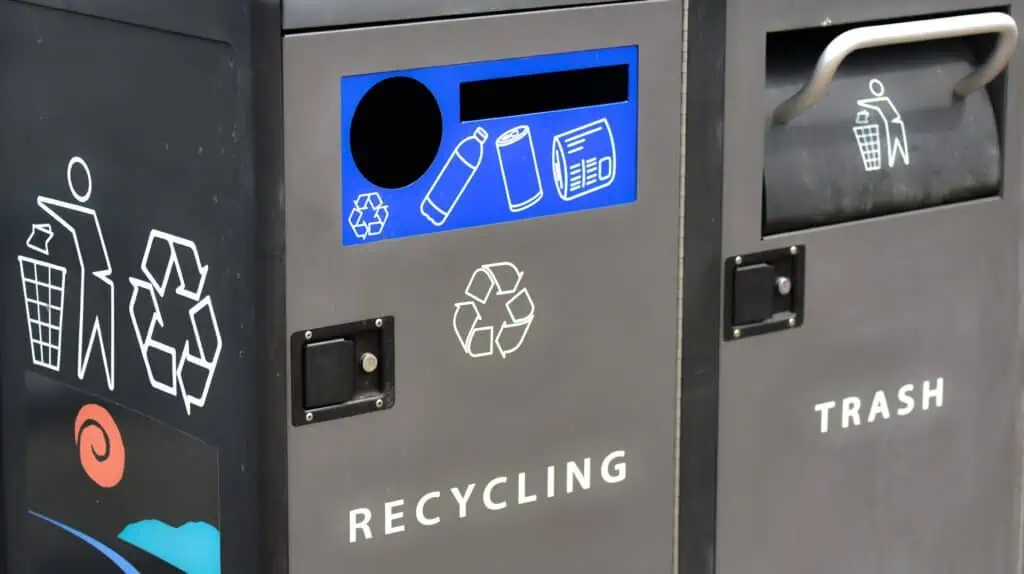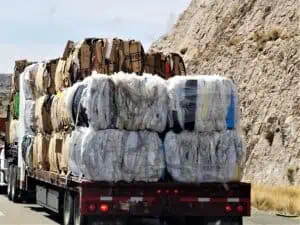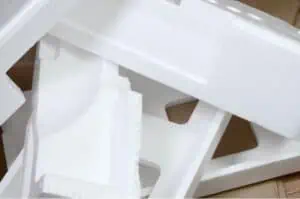We live in a fast-paced, convenience-driven world. We can order practically anything in an instant and have it delivered to us quickly; cost-effective and efficient packaging plays a significant role in this ever-expanding consumer culture.
While it is indeed important to protect and safely transport the goods that people order and that companies ship in an affordable way, the materials used to do so (like thermocol) can have a detrimental impact on the environment.
In order to deal with the vast amounts of thermocol out in the world in the right way, you first have to know more about it — and how to dispose of it.
What is thermocol? Is it the same as styrofoam?
An expanded polystyrene (EPS), you’ve likely interacted with thermocol countless times without knowing what it’s called…and confusing it with something else (like styrofoam).
But, the fact is that any time you get a delicate item delivered to you — whether a new full-length mirror, a desk, or bookshelves – there’s a good chance it was packed with thermocol. Why?
Thermocol is protective but lightweight
Thermocol acts as a really good shock absorber, and it’s so lightweight that its inclusion in a package only negligibly adds to the overall packed weight. Thermocol is seen as a reliable and popular means to safely and securely transfer high-value or breakable items from place to place, and that means there’s a lot of it out there.
How much thermocol is out there?
With its lightweight and insulating properties, thermocol has truly become nearly ubiquitous in our daily lives. Is thermocol recyclable? Yes, but as you will see, it isn’t easy to do.
Overall, the potential environmental consequences of thermocol waste or improper disposal demand our attention.
What is the environmental impact of thermocol?
What makes thermocol an ideal packing material also makes it incredibly difficult to dispose of (just like its polystyrene cousin, styrofoam). When not done in the right way by professionals and facilities capable of handling its unique properties, the environment pays the price.
It poses a danger to wildlife
For instance, if broken apart into smaller pieces that can blow away in the wind, wild animals may mistake thermocol for food. This can harm their digestive systems, or even cause them to choke if the pieces are too large. In this way, thermocol poses a significant threat to marine life.
It is combustible and toxic when burned
As it is an EPS material derived from petroleum, thermocol is quite combustible. It should always be kept away from heat sources and never be near an open flame. When burned, thermocol can release toxic gasses and other pollutants into the air.
It is too often improperly disposed of
Finally, many companies mistakenly throw thermocol out with the garbage or standard recycling. In windy weather, thermocol is so lightweight that it can easily be blown into the air.
Over time, this can lead to vast amounts of thermocol piling up, a phenomenon especially notable in urban areas. Even if it isn’t blown out of the trash, it will just end up in a landfill.
As stated before, thermocol litter can be dangerous to wildlife, and it is also an eyesore. It should always be disposed of properly.
Is thermocol recyclable?
Yes, thermocol can be recycled, but it is not a simple process. It has to be compressed and melted into smaller sheets or pellets, and doing so is not possible outside of a dedicated facility. Operations that effectively break down and recycle thermocol are few and far between.
When a company like Generated Materials Recovery is in your area, and you have thermocol you need recycled, you should take advantage of such services.
What are some challenges with thermocol disposal and recycling?
While lightweight, it is also bulky, and this means more space is needed both for storage and transportation. It most definitely should not be put out with everyday household recycling or even placed in a larger recycling dumpster outside a place of business.
Thermocol should be sent to a facility that has specialized equipment capable of safely and properly breaking it down and preparing it for reuse.
Who can help with thermocol recycling?
You could certainly call a local waste management company to come take away your thermocol, as some such providers do have the ability to get rid of EPS products. However, many organizations can’t handle the amount of industrial waste, and you’ll need to find alternatives. That’s where Generated Materials Recovery can help.
Companies like Generated Materials Recovery (GMR) play a pivotal role in safeguarding the environment for posterity. GMR is capable of handling the recycling of large volumes of EPS materials like thermocol.
GMR takes care of industrial-grade recycling for businesses, cities, and more, taking thermocol and other EPS materials — like styrofoam — and helping to break them down and integrate them into other materials in a sustainable way.
Have you got a lot of thermocol on your hands and don’t know what to do with it? Then give GMR a call today for all of your thermocol recycling or other industrial recycling needs.







